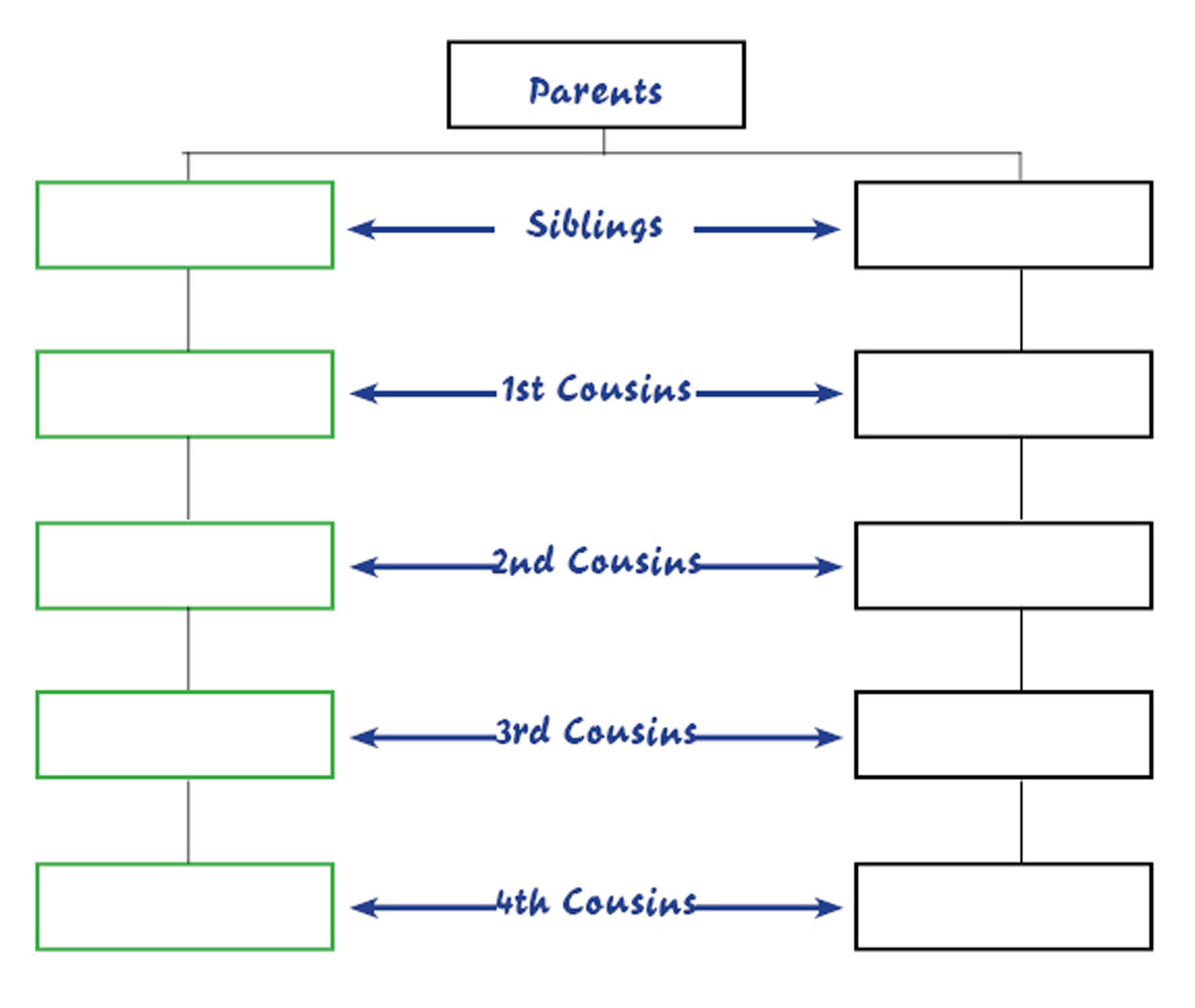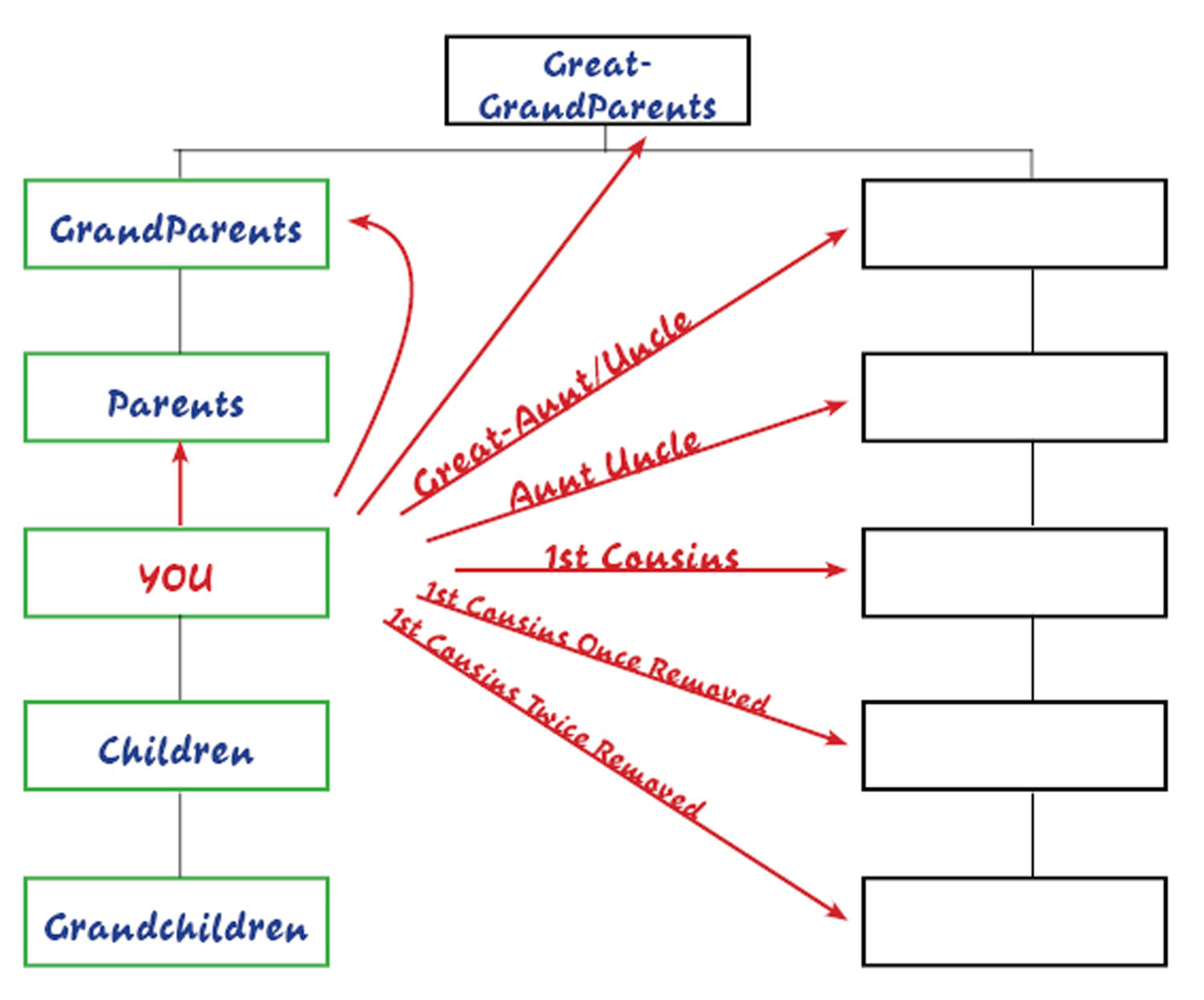
So–the “great” and “grand” thing first.
 First, there are parents and children. When you go one generation “out” from that, you’ve got Grandparents and Grandchildren. (Just like you called your parents’ parents Grandma and Grandpa, your children will call your parents that…. give or take a grandparental nickname or two.)
First, there are parents and children. When you go one generation “out” from that, you’ve got Grandparents and Grandchildren. (Just like you called your parents’ parents Grandma and Grandpa, your children will call your parents that…. give or take a grandparental nickname or two.)
The next generation “down” are greats. As in, great-grandchildren. If you’re lucky enough to have enough generations in your family, your grandparents are going to call your kids their Great-grandchildren. And your grandchildren will be their great-great-grandchildren.
Now, how about that first, second, third, fourth cousin thing?
 This basically counts generations from the nearest, shared relative.
This basically counts generations from the nearest, shared relative.
Each, complete, level of “branches” on the family tree is a new level of cousinship (if there is such a word).
Starting from any happy couple, their children are siblings (brothers and sisters), and their children are first cousins.
Children of first cousins are yet another generation away from the original pair, so they are second cousins, and their children will be third cousins, and their children will be fourth cousins, and so on, and so on.
As long as you’re on the same “level” of branches, you’re “equal” cousins.
So–what about cousins that are the once, twice, three-times removed?
 This comes into play when you have relationships that cross generations–that are on different levels of branches.
This comes into play when you have relationships that cross generations–that are on different levels of branches.
The children of your first cousins will be “once removed” to you, because they are children of your first cousins–kind of like cousin level one and a half. But YOUR children and those children will be second cousins (because they’re the same generation).
Similarly, if you start with a pair of second cousins (A & B, who share great-grandparents), then when A has a child–that child is Second Cousin Once Removed to B … but when B falls in love and has kids, his child and A’s child will be third cousins.
But what about Aunts and Uncles?
When you’re talking about aunts and uncles who are from earlier generations from you, you add “greats” to each generation above your parents’ siblings.
When you’re talking about children, grandchildren, and great-grandchildren of your own siblings, they will be niece/nephew, great-niece/nephew, and great-great-niece/nephew.
See? It’s really quite simple!
Now, here’s a little quiz:
- If your father’s brother has a grandchild … what is that child’s relationship to you?
- What do you call your great-grandmother’s sister? (Assuming she’s still alive for you to talk to.)
- What will your grandchildren call your brother’s grandchildren?
- What will your children call your Aunt’s grandchildren?
- Quick–If I mention your second cousin once removed … how is he related to you?
(Answers: 1. First cousin once removed. 2. Great-great-Aunt. 3. Second cousins. 4. Second cousin. 5. My grandfather’s brother’s great-grandchildren.

I’ve always kind of wondered about this. I knew the grandparents/grandchildren, etc. Knew the first/second, etc. But I thought the once removed had to do with marriage.
Thanks for clearing that up for me.
J’s last blog post..Friday Dog Blogging